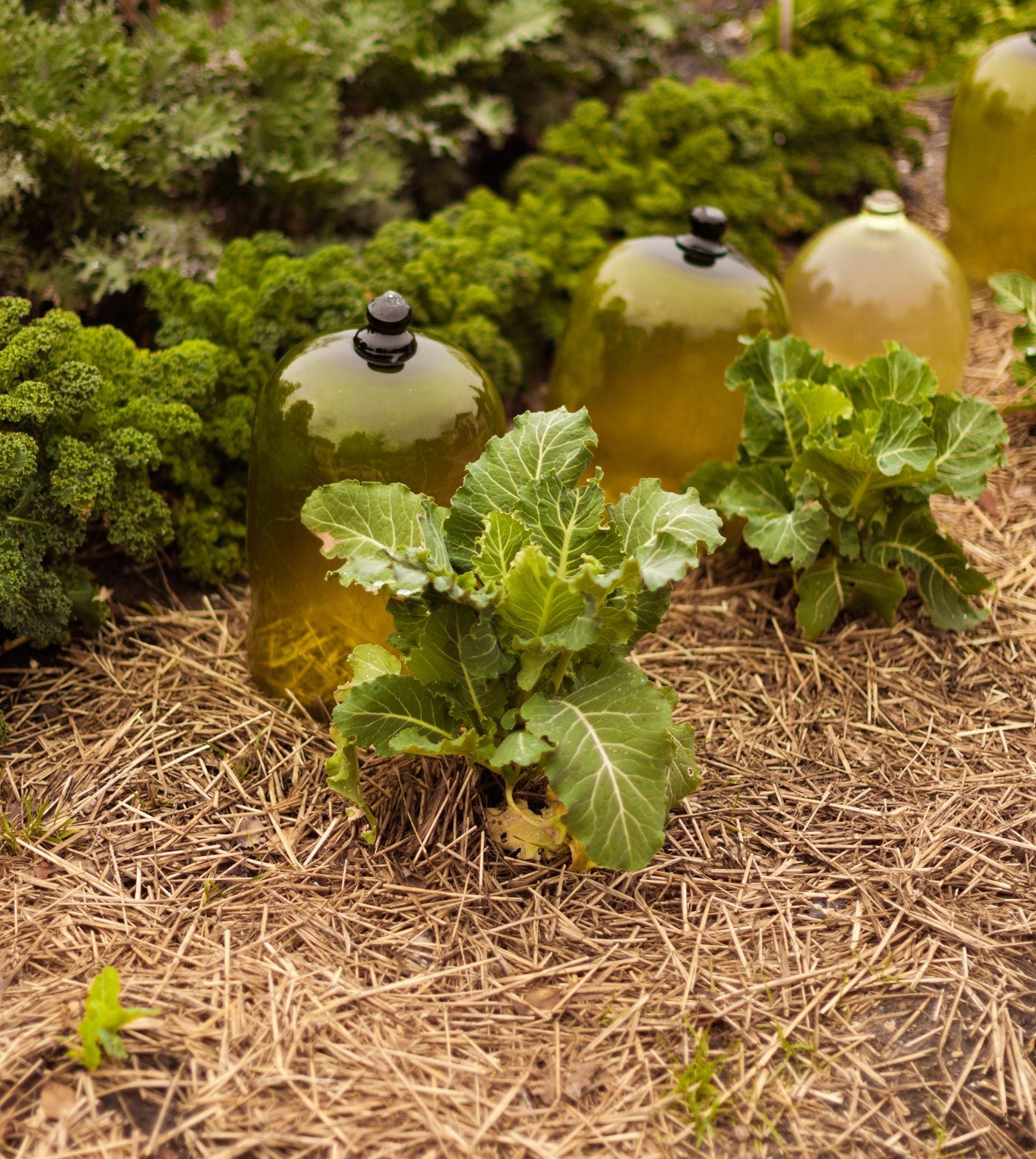What Are Cloches And Bell Jars: How To Use Cloches In Gardens


Sylvia Plath knew what they were, but I think her bell jar was more of a confining and suffocating item, whereas, in reality, they are shelters and protectors of tender or new life. Bell jars and cloches are invaluable objects for the gardener. What are cloches and bell jars? Each is designed to go over plants to keep them warm, protect them from snow and ice, and act as a mini greenhouse. Cloches in gardens allow northern gardeners to start plants early. There are many aspects on how to use cloches and bell jars in the garden.
What are Cloches and Bell Jars?
Garden cloches are the fancy term for a glass dome that you place over plants sensitive to cold. The word actually means "bell" in French. The glass enhances the light and heat for the plant and protects it from direct contact with snow or ice. These are most useful for small plants and starts. A bell jar is basically the same item, but fans out slightly wider at the base and has a handle at the top. The original bell jars had handles of blown glass, but this focused the sunlight with laser-like intensity and most gardeners soon lopped off the handle. Flower bell jars with glass handles are a thing of the past, as most have been replaced with wood or even plastic handles.
Bell Jars and Cloches in Gardens
These protective caps are useful in many garden situations. Young seedlings covered by bell jars or cloches are protected from cool spring weather, which means you can start them outside even when the soil hasn't warmed up all the way. Garden cloches are also handy to overwinter slightly sensitive plants. Although the original cloches were glass domes, you can make something similar with plastic and a wire form. The idea is to focus sunlight's heat and light so your veggies get an early start or that favorite plant overwinters successfully. They also increase early blooming in plants that usually don't flower until after all danger of frost has passed. Flower bell jars allow tender summer flowers to grow up to four weeks earlier in the season.
How to Use Cloches and Bell Jars
You can purchase the expensive blown glass covers, or you can use the plastic cells that you fill with water. These perform the same function and are an inexpensive cloche that still lets plants grow in cool-season temperatures. You may also use milk jugs with the bottom cut out. Make sure you put whatever type of cover you choose over the plant early. Watch the forecast or just keep plants covered with garden cloches in zones where freezing temperatures and a short growing season are the norms. Common plants to start in a cloche are tomatoes, peppers, and tender herbs, like basil. Exotic plants also benefit from snuggling under a garden cloche. Watch for high temperatures and vent the cloche to prevent the plant from literally cooking. When the sun is hot and high, prop up the edge of the cloche with a stick or something to allow excess hot air to escape.
Gardening tips, videos, info and more delivered right to your inbox!
Sign up for the Gardening Know How newsletter today and receive a free copy of our e-book "How to Grow Delicious Tomatoes".

Bonnie Grant is a professional landscaper with a Certification in Urban Gardening. She has been gardening and writing for 15 years. A former professional chef, she has a passion for edible landscaping.